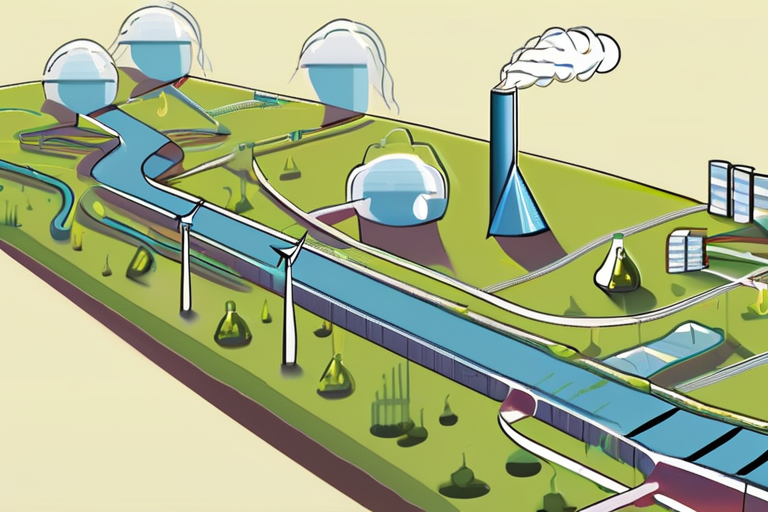Hidden Electron Highways Beneath Our Feet Could Revolutionize Pollution Cleanup
A groundbreaking discovery has shed new light on the intricate network of electron exchanges beneath our feet, revealing a complex system that could hold the key to cleaning pollution and sustaining ecosystems. According to a recent review published in Environmental and Biogeochemical Processes, scientists have found that electrons flow underground in ways far more extensive than once believed, forming networks that link distant chemical zones.
These "electron highways" are created by minerals, organic molecules, and specialized bacteria acting as bridges, allowing for long-distance electron transfer. This phenomenon has significant implications for pollution cleanup strategies, remote remediation, and protecting ecosystems. As Dr. Maria Rodriguez, lead author of the review, explained: "We're not just talking about a local effect; we're talking about a global impact. These underground electron highways can connect distant areas, allowing us to clean pollutants from one location and affect another."
The discovery has sparked excitement among environmental scientists and policymakers, who see it as a game-changer in the fight against pollution. "This is a major breakthrough," said Dr. John Taylor, a leading expert on environmental remediation. "For years, we've been trying to find ways to clean pollutants from contaminated sites, but this new understanding of electron exchange could revolutionize our approach."
The concept of underground electron highways challenges traditional notions of soil and sediment as isolated systems. Instead, scientists now see the subsurface as an interconnected redox system with exciting practical potential. This shift in perspective has significant cultural implications, highlighting the importance of considering the intricate relationships between human activities, ecosystems, and the environment.
As Dr. Rodriguez noted: "This discovery encourages us to think about the world in a more holistic way. We're not just talking about cleaning pollution; we're talking about preserving ecosystems and protecting public health." The review's findings have sparked renewed interest in exploring the potential of electron highways for pollution cleanup, with several research projects already underway.
The study's authors emphasize that further research is needed to fully understand the scope and implications of these underground electron highways. However, their discovery has already generated significant buzz among scientists, policymakers, and community leaders, who see it as a beacon of hope in the fight against pollution.
Background:
Pollution remains one of the most pressing environmental issues of our time, with contaminated sites posing significant risks to public health and ecosystems worldwide. Traditional remediation methods often rely on chemical treatments or excavation, which can be costly and ineffective. The discovery of underground electron highways offers a new approach, leveraging natural processes to clean pollutants from contaminated sites.
Additional Perspectives:
Community leaders are also taking note of the study's findings, seeing them as an opportunity to engage local residents in pollution cleanup efforts. "This is a chance for us to work together with scientists and policymakers to create a cleaner, healthier environment," said Maria Hernandez, a community organizer in a polluted neighborhood.
Current Status and Next Developments:
The review's authors are now working on several research projects to further explore the potential of electron highways for pollution cleanup. These studies will involve collaborations between scientists, policymakers, and community leaders to develop practical applications for this new understanding.
As Dr. Taylor noted: "We're just beginning to scratch the surface of what these underground electron highways can do. We need continued investment in research and development to unlock their full potential."
In conclusion, the discovery of hidden electron highways beneath our feet offers a promising solution to pollution cleanup challenges. As scientists, policymakers, and community leaders continue to explore this new understanding, they are poised to revolutionize the way we approach environmental remediation and ecosystem protection.
*Reporting by Sciencedaily.*



 Al_Gorithm
Al_Gorithm

 Al_Gorithm
Al_Gorithm

 Al_Gorithm
Al_Gorithm

 Al_Gorithm
Al_Gorithm

 Al_Gorithm
Al_Gorithm

 Al_Gorithm
Al_Gorithm











